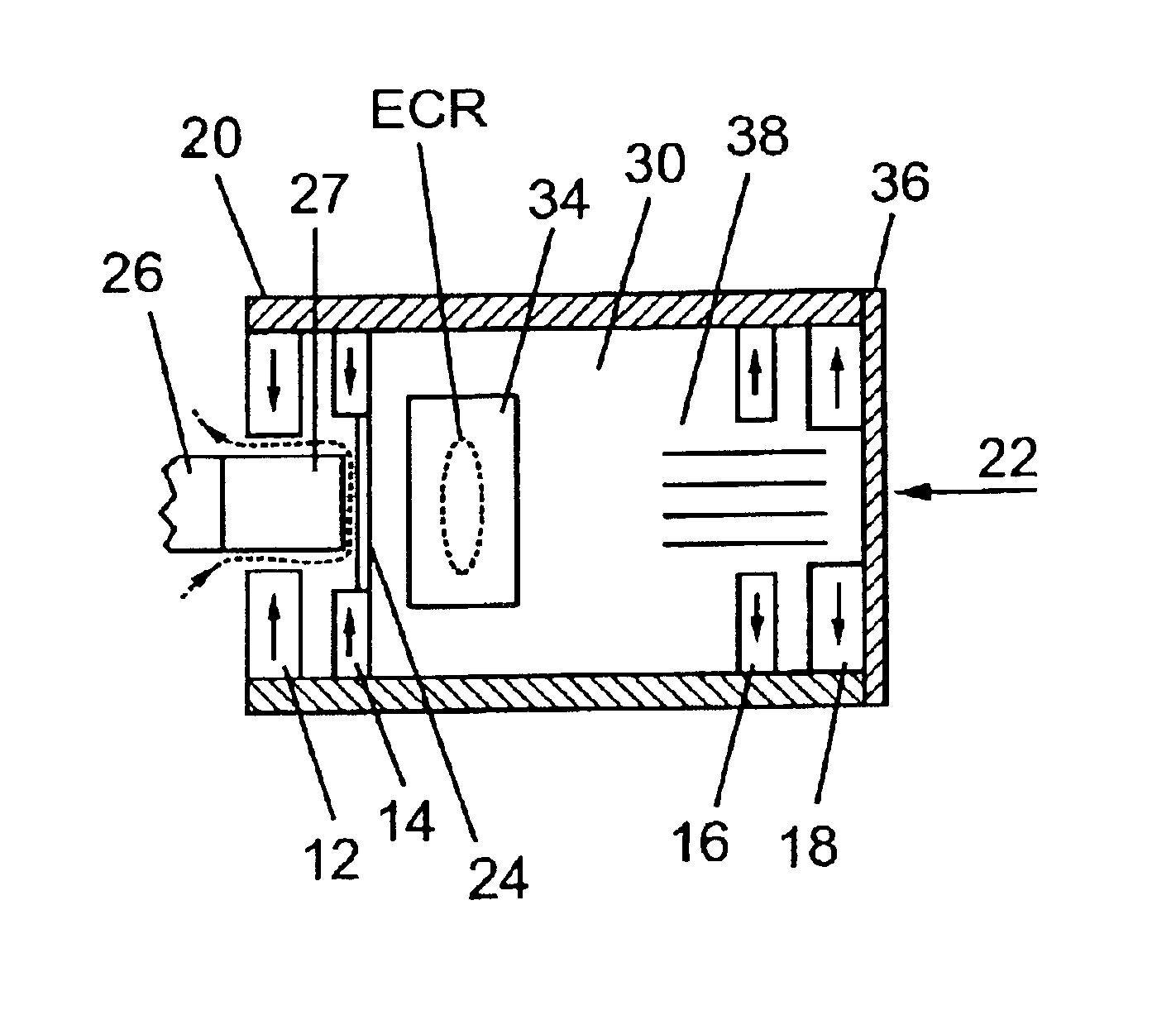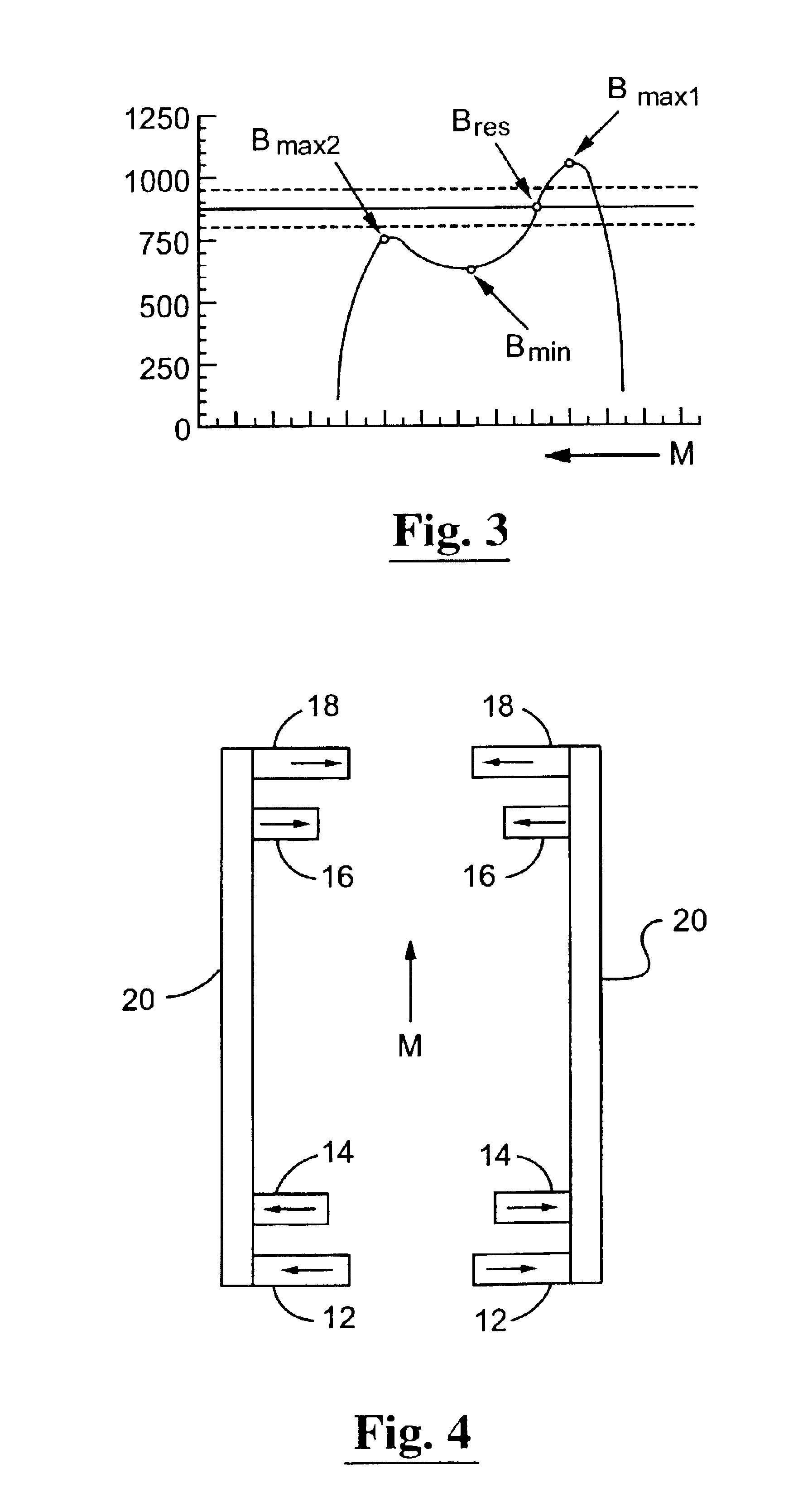Stand alone plasma vacuum pump
a vacuum pump and plasma technology, applied in mechanical equipment, machines/engines, positive displacement liquid engines, etc., can solve the problems of not being developed, effective systems for achieving high, and existing vacuum pumping technology can only provide limited gas throughput, etc., to achieve the effect of promoting plasma flow
- Summary
- Abstract
- Description
- Claims
- Application Information
AI Technical Summary
Benefits of technology
Problems solved by technology
Method used
Image
Examples
Embodiment Construction
FIG. 1 illustrates the helical trajectory of an electron moving in a static magnetic field having lines of force which extend in the general direction of arrow M. As is well known in the art and described more fully in, for example, Plasmas and Controlled Fusion, by David J. Rose and Melville Clark, Jr., John Wiley and Sons, New York (1961) Chapter 10, the helical trajectory illustrated in FIG. 1 can be regarded as resulting from the superposition of a transverse rotational motion (“gyration”) around the magnetic lines of force and a lineal motion along the magnetic line of force. The angular frequency of the gyration (the “electron gyrofrequency”), Ωe, is proportional to the magnitude of the magnetic field strength, B=|B|:
Ωe=2πfe=eB / m
Here e and m are the electric charge and mass of the electron, respectively. In a magnetic field of 875 Gauss, for example, the electron gyrofrequency, fe, equals 2.45 GHz, the frequency of the microwave power used in many commercial applications.
If mi...
PUM
 Login to View More
Login to View More Abstract
Description
Claims
Application Information
 Login to View More
Login to View More - R&D
- Intellectual Property
- Life Sciences
- Materials
- Tech Scout
- Unparalleled Data Quality
- Higher Quality Content
- 60% Fewer Hallucinations
Browse by: Latest US Patents, China's latest patents, Technical Efficacy Thesaurus, Application Domain, Technology Topic, Popular Technical Reports.
© 2025 PatSnap. All rights reserved.Legal|Privacy policy|Modern Slavery Act Transparency Statement|Sitemap|About US| Contact US: help@patsnap.com



